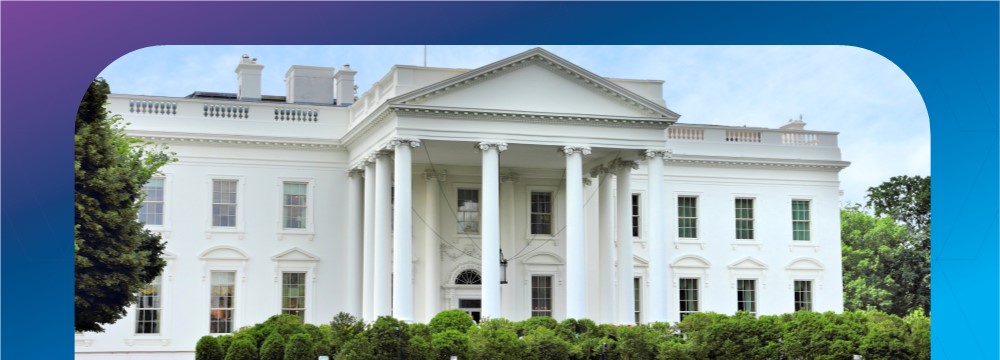New Executive Orders Signal Shift in U.S. Artificial Intelligence and Science Policy
March 14, 2025 – Legal Alerts
In January 2025, President Donald Trump issued two executive orders that mark a significant change in the federal government's approach to artificial intelligence, science and technology policy. These orders establish new priorities and structures for businesses operating in the tech sector and those utilizing AI technologies.
Executive Order 14177: President's Council of Advisors on Science and Technology
Order 14177 establishes a new President's Council of Advisors on Science and Technology (PCAST), replacing the previous council established by Executive Order 14007 of January 27, 2021.[1]
The new council will be composed of up to 24 members, including the Assistant to the President for Science and Technology and the Special Advisor for AI & Crypto as co-chairs.
Key functions of the PCAST include:
- Advising the President on matters involving science, technology, education and innovation policy
- Providing information to inform public policy relating to the American economy, workers, national security and other topics
- Soliciting information from a broad range of stakeholders including research communities, private sector, universities and state/local governments
- Serving as the advisory committee for high-performance computing and nanotechnology initiatives
Executive Order 14179: Removing Barriers to American Leadership in Artificial Intelligence
Order 14179 explicitly revokes Executive Order 14110 of October 30, 2023 ("Safe, Secure, and Trustworthy Development and Use of Artificial Intelligence").[2] The original order established compliance requirements for businesses developing AI systems, including sharing safety test results and implementing risk management measures.
The new order emphasizes U.S. technological leadership, economic competitiveness and national security as primary objectives. It defines the policy of the United States as one that will "sustain and enhance America's global AI dominance in order to promote human flourishing, economic competitiveness, and national security."
Key provisions include:
- The creation of an Artificial Intelligence (AI) Action Plan to be developed within 180 days by the Assistant to the President for Science and Technology, the Special Advisor for AI and Crypto and the Assistant to the President for National Security Affairs, in coordination with other officials
- Immediate review of all policies, directives, regulations and actions taken under the previous AI executive order
- Revision of Office of Management and Budget memoranda to align with the new policy
The order states that policies regarding AI systems should provide a means to "clear a path for the United States to act decisively to retain global leadership in artificial intelligence." The White House has requested comments from the public regarding the AI Action Plan. Comments can be submitted online until March 15, 2025.
What this could mean for the USPTO
In January 2025, the USPTO released a new Artificial Intelligence Strategy (AI Strategy).[3] The AI Strategy focused on the development of inclusive, best-in-class, responsible and collaborative AI innovation and policies. Many of the focus areas and action plans in it directly related to provisions of former President Joe Biden’s now revoked Executive Order on AI. The USPTO has removed the AI Strategy from its website, and says it is currently under review to “reflect the AI policies of the White House, Department of Commerce, and the USPTO.”[4]
Some focus areas of the previously published report, such as building best-in-class AI capabilities and developing AI expertise within the USPTO’s workforce, likely still align with the new Executive Order based on the current administration’s history of promoting the adoption of AI in federal agencies and seeking to establish the United States as a leader in AI innovation.[5] However, other focus areas which would likely be seen as a barriers to innovation (e.g., mandatory reporting, safeguards on information, etc.) may be revised or replaced in light of the new Executive Order.
For example, Biden’s Executive Order on AI included mandatory reporting requirements for federal agencies, including submitting AI use case inventories, reporting on the AI’s intended purpose, expected benefits, outputs, development stage, data and code and enablement and infrastructure.[6] Agencies also had to answer questions about AI use cases regarding rights or safety. Some agencies were required to report aggregate metrics on their AI development.[7] These reporting requirements are likely some of the “barriers” to innovation that the current Executive Order intends to remove for federal agencies, like the USPTO.
As part of the public comment on the development of the new AI Action Plan, other private sector stakeholders, such as OpenAI, are also pushing for reduced restrictions and guardrails for AI innovation. OpenAI, currently facing many copyright infringement lawsuits, has also urged the government to “preserv[e] American AI models’ ability to learn from copyrighted material.”[8] If such a right is enshrined in the new AI Action Plan, or subsequent Executive Order, we could also expect to see policy changes at the U.S. Copyright Office and even new precedents at the court level.
Dinsmore will continue to monitor developments as these policies are implemented. If you have questions about how these changes in policies and compliance requirements may affect your business, please contact your attorney.
[1] https://www.whitehouse.gov/presidential-actions/2025/01/presidents-council-of-advisors-on-science-and-technology/
[2] https://www.whitehouse.gov/presidential-actions/2025/01/removing-barriers-to-american-leadership-in-artificial-intelligence/
[3] https://web.archive.org/web/20250114161229/https://www.uspto.gov/sites/default/files/documents/uspto-ai-strategy.pdf
[4] https://www.uspto.gov/initiatives/artificial-intelligence/ai-strategy
[5] https://trumpwhitehouse.archives.gov/ai/executive-order-ai/
[6] https://www.whitehouse.gov/wp-content/uploads/2024/03/DRAFT-Guidance-for-Agency-Artificial-Intelligence-Reporting-per-EO14110.pdf
[7] Id.
[8] https://www.cnbc.com/2025/03/13/openai-lobbies-trump-admin-to-focus-ai-on-speed-light-regulation.html

